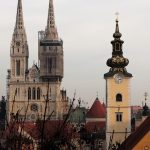ZAGREB, June 14, 2019 – A low-carbon economy, energy independence and efficiency are the main objectives of Croatia’s energy strategy, it was heard at a conference – New energy strategy and sustainable financing – organised by the Croatian Chamber of Commerce on Friday.
Assistant Environment and Energy Minister Domagoj Validžić said that Croatia is heading toward a low-carbon economy.
With the implementation of the new energy strategy, Croatia would among other things, become energy independent, with cleaner and more efficient energy, whereas energy development will impact the economy overall, he said.
The director in charge of preparing the draft strategy for Croatia’s energy development to 2030 with an outlook to 2050, Barbara Dorić underscored that energy transition is a process that changes the structure of production, transmission, distribution and consumption of energy.
Three scenarios are being considered – S0 which foresees the country’s energy development by applying existing measures, S1 – accelerated energy transition and S2 moderate energy transition.
The main objectives of the strategy and which are foreseen in scenario S2 is the reduction of greenhouse gasses by 35% by 2030 and 64% by 2050 compared to 1990 whereas under S1 that reduction would be 38% and 74% respectively.
Overall consumption would be reduced, she underscored in comparison to 2017.
The greatest change is expected in renewable energy sources and its use is expected to rise from 21.4% in 2017 to 31.5% in 2030 and to 46.3% by 2050 (S2).
The plan is to construct on average about 170 (MW) of power in new electricity plants a year based on the moderate scenario or 250 MW at the accelerated rate of transition, she explained.
An estimated reduction in gas production is expected from the current 1.5 billion cubic metres to about 9000 million cubic metres by 2020, she said.
According to estimates the energy transition would require an investment of 378.9 billion kuna in the period 2021 to 2050 for S2 or an average of 12.6 billion kuna a year whereas S1 would require investments of 416.7 billion kuna or 15.4 billion kuna a year.
More energy news can be found in the Business section.








